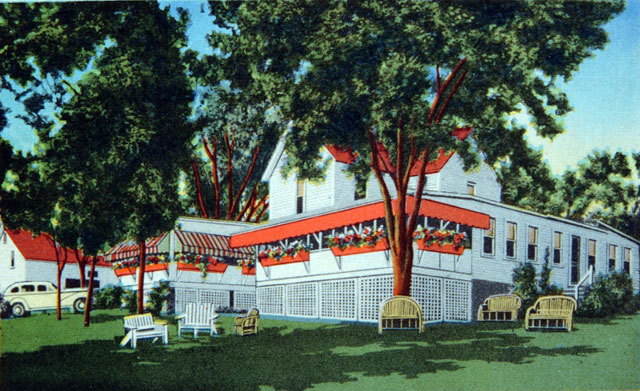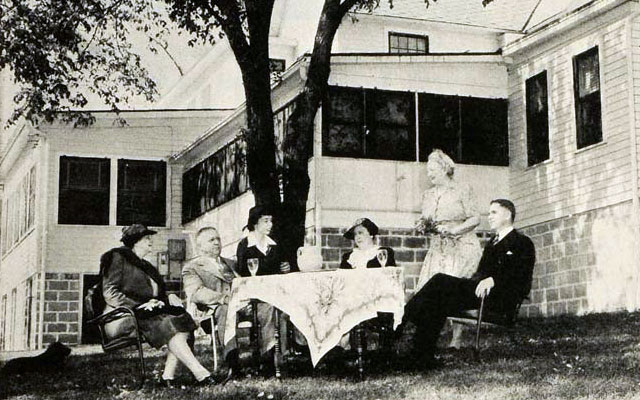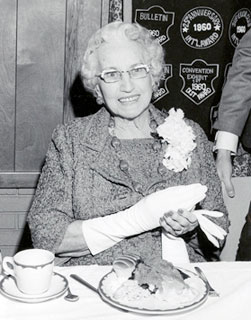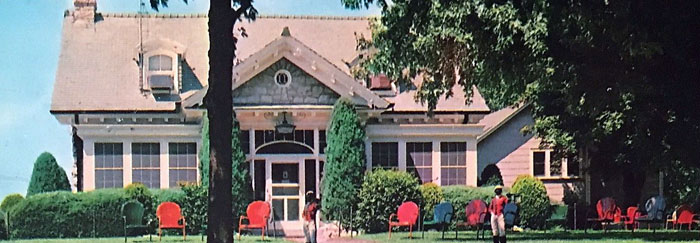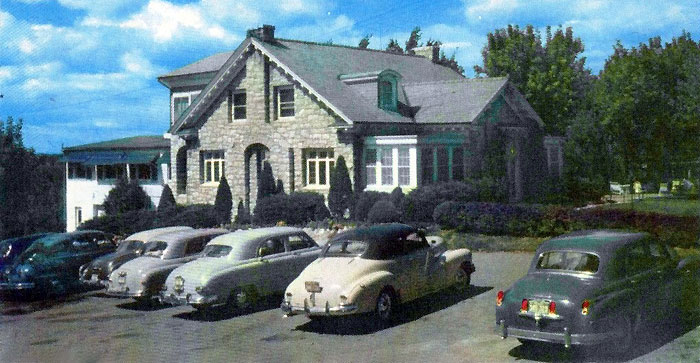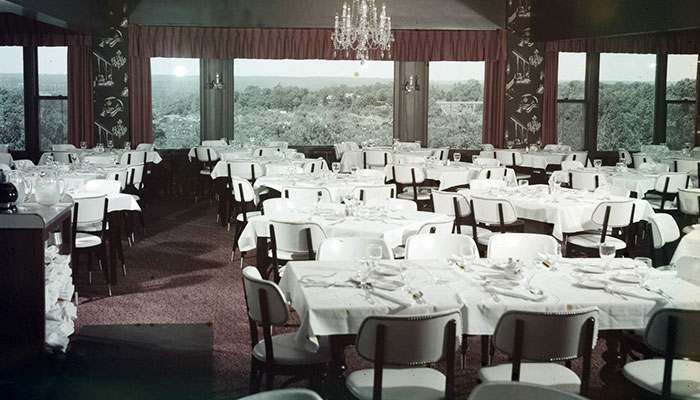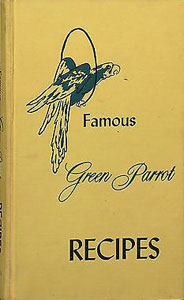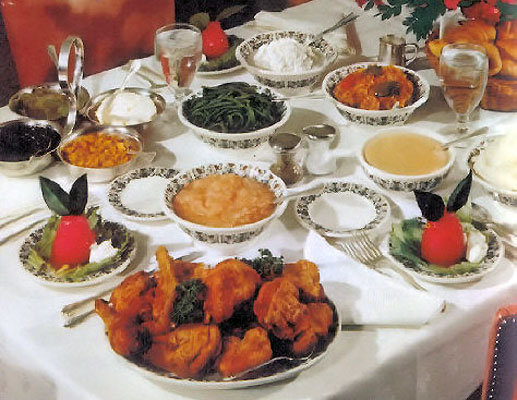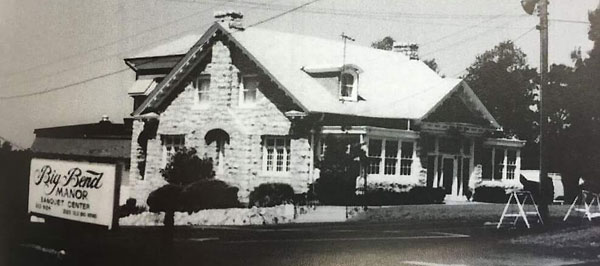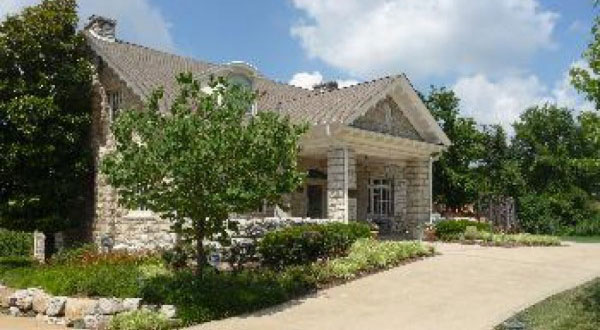|
Green Parrot Inn
Tena May Dowd grew up on a ranch in Downs, in north-central Kansas. When she was thirteen, her mother died, and it fell upon the adolescent Dowd to take care of her younger brothers and sisters, and run the household, which fostered a love of cooking. Dowd married a local boy (J. B. Dowd), had a family and relocated to Wichita for her husbandís job. It was in Wichita that Dowd capitalized on her love for cooking and opened a restaurant, which she called the Green Parrot Inn. Dowd operated the Wichita Green Parrot Inn from 1925 to 1929. The menu featured home cooked meals, including the dish that would become her staple Ė fried chicken.
In 1929, Dowd's husband was transferred to
Kansas City as assistant manager of the Oliver Farm Equipment
Company. Dowd closed her Wichita restaurant and purchased a 3-room
frame building on a weed-covered hill at 52nd Street and State Line
Road. Her Kansas City Green Parrot Inn would eventually expand to a
building seating more than 300 patrons.
The Green Parrot Inn thrived. It became "the
place to eat fried chicken" in Kansas City. In 1938, basking in her
success, Tena May Dowd and her brother, James H. Toothman, expanded
to the St. Louis suburbs and opened a Green Parrot Inn at 12120 Big
Bend Road in Kirkwood.
* * * * * James Toothman and his wife Mary operated the Green Parrot Inn on a beautiful ten-acre tract on Big Bend in Kirkwood. In its early day, patrons used to complain about the remote location.
The main building was built in 1915 by William
Bopp, constructed of limestone
quarried on the property. In the Prohibition era, before the Toothmans took over, it was a speakeasy. Because the Toothmans
believed that good food and liquor didnít mix, they never served
anything stronger than coffee, tea and milk.
When customers arrived at the restaurant, they
were greeted by the Toothman's pet green parrot on the screened
front porch. They then entered the Green Parrot's dining room, with
its patterned wallpaper and airy windows along one long wall.
The Green Parrot Inn served family-style
all-you-can-eat fare. After being seated, a waitress arrived and
provided a verbal menu. In 1971, the choices were fried chicken,
T-bone steak, red snapper or lobster tails. But the restaurant's
success was built on its fried chicken dinners, accounting for 90
per cent of its trade. The chicken was rolled in flour, salt and
pepper, and fried in a heavy aluminum covered skillet in "the best
lard money could buy."
The entree was the only dish ordered. In
minutes, a busboy arrived with water and tossed salads. Ten minutes
after being seated, the entrees were set down by one busboy, and
another filled the remaining space on the table with serving bowls
of Spanish rice, cottage cheese, green beans flavored with bacon and
onion, mashed potatoes with cream gravy on the side, and a homemade
applesauce that contained Jonathan apples, sugar and water. Homemade
Parker House rolls were served with honey butter.
Ice cream and sherbet were included with the dinner, but if a diner wanted to splurge, they could order homemade French silk chocolate pie for 35 cents extra. Children who ate all their food were rewarded with sticks of gum. The serving was so well organized, that smaller parties could get out in 45 minutes and larger groups in no more than an hour. Many left with doggie bags, or "people bags," as the Toothman's son Wayne preferred to call them. Diners frequently ordered more chicken than they could eat and dined on the surplus at home. In 1971, the Green Parrot Inn's chicken dinners ranged from $3.75 to $4.25 for adults, and started at $1.25 for children age 2, gradually increasing to age 9. In 1977, the all-you-can-eat chicken dinner cost $7.00. * * * * * In 1955, Tena May Dowd closed her Green Parrot Inn in Kansas City and retired to a home on a hill overlooking the restaurant. The Green Parrot Inn in Kirkwood, which Dowd had opened with her brother James Toothman in 1938, continued to serve family-style fried chicken dinners until 1983. After Toothman died in 1962 and his wife in 1973, the restaurant was operated by their two sons, Wayne and Ben. Five years later, Wayne Toothman sold his share of the restaurant to his brother.
On June 12, 1983, eight hundred longtime
customers of the Green Parrot Inn sat down to their last
family-style Sunday dinner at the Kirkwood restaurant.
The Toothman familyís pet green parrot had died three weeks earlier.
Upon closing his restaurant, Ben Toothman sold
the building and land his parents had purchased in 1938, and it
became a banquet hall called Big Bend Manor. Eventually, the
building was redeveloped as a single family home.
Copyright © 2017 LostTables.com |



